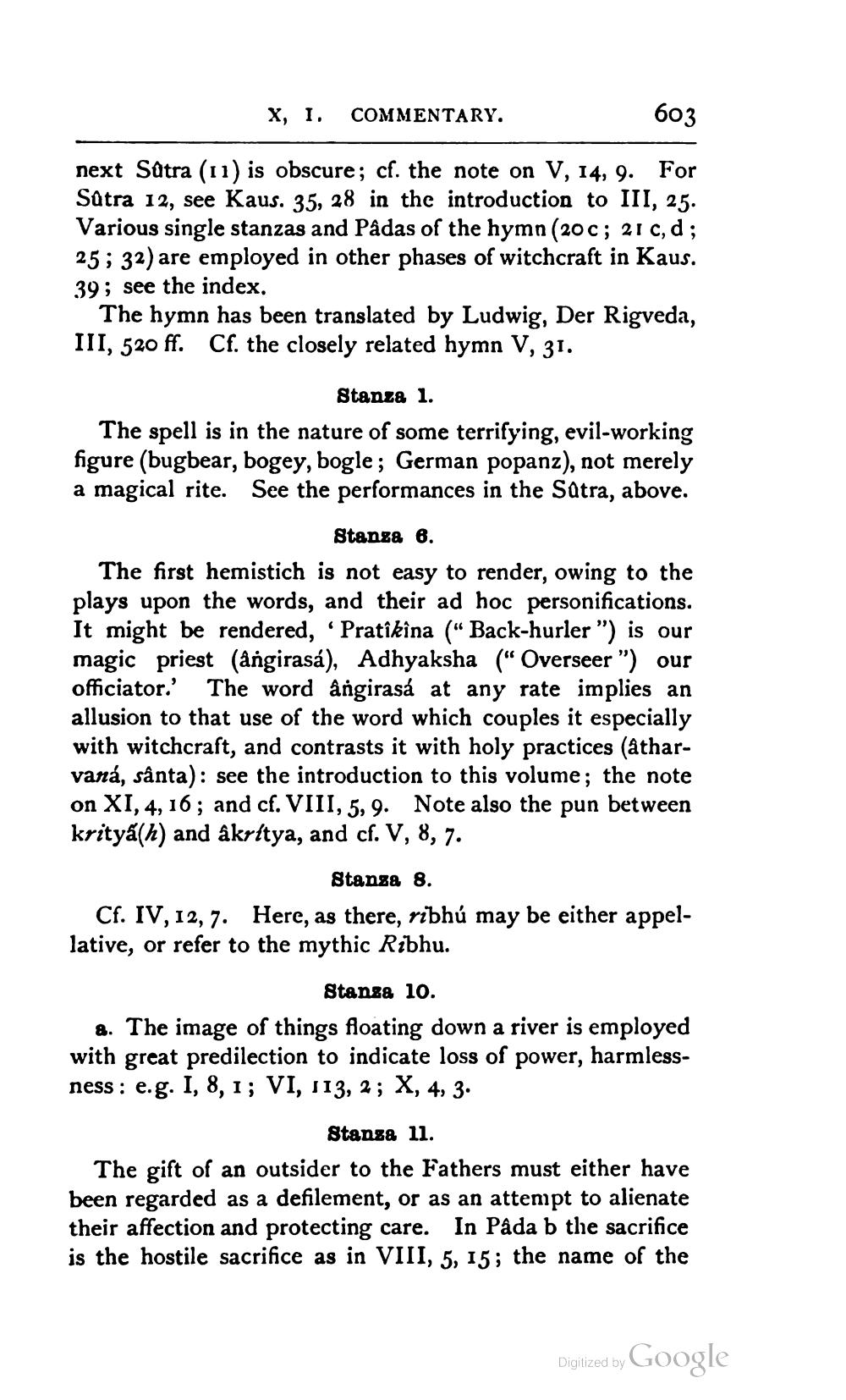________________
X, 1. COMMENTARY.
603
next Sutra (11) is obscure; cf. the note on V, 14, 9. For Sutra 12, see Kaus. 35, 28 in the introduction to III, 25. Various single stanzas and Pädas of the hymn (200; 21 c, d ; 25; 32) are employed in other phases of witchcraft in Kaus. 39; see the index.
The hymn has been translated by Ludwig, Der Rigveda, III, 520 ff. Cf. the closely related hymn V, 31.
Stanza 1. The spell is in the nature of some terrifying, evil-working figure (bugbear, bogey, bogle; German popanz), not merely a magical rite. See the performances in the Satra, above.
Stanza 6. The first hemistich is not easy to render, owing to the plays upon the words, and their ad hoc personifications. It might be rendered, ‘Pratîkina (“ Back-hurler ") is our magic priest (angirasa), Adhyaksha (“Overseer") our officiator.' The word angirasa at any rate implies an allusion to that use of the word which couples it especially with witchcraft, and contrasts it with holy practices (atharvaná, sânta): see the introduction to this volume; the note on XI, 4, 16; and cf. VIII, 5, 9. Note also the pun between krityá(h) and âkrltya, and cf. V, 8, 7.
Stanza 8. Cf. IV, 12,7. Here, as there, ribhú may be either appellative, or refer to the mythic Ribhu.
Stanza 10. 8. The image of things floating down a river is employed with great predilection to indicate loss of power, harmlessness : e.g. I, 8, 1; VI, 113, 2; X, 4, 3.
Stanza 11. The gift of an outsider to the Fathers must either have been regarded as a defilement, or as an attempt to alienate their affection and protecting care. In Pada b the sacrifice is the hostile sacrifice as in VIII, 5, 15; the name of the
Digitized by Google




